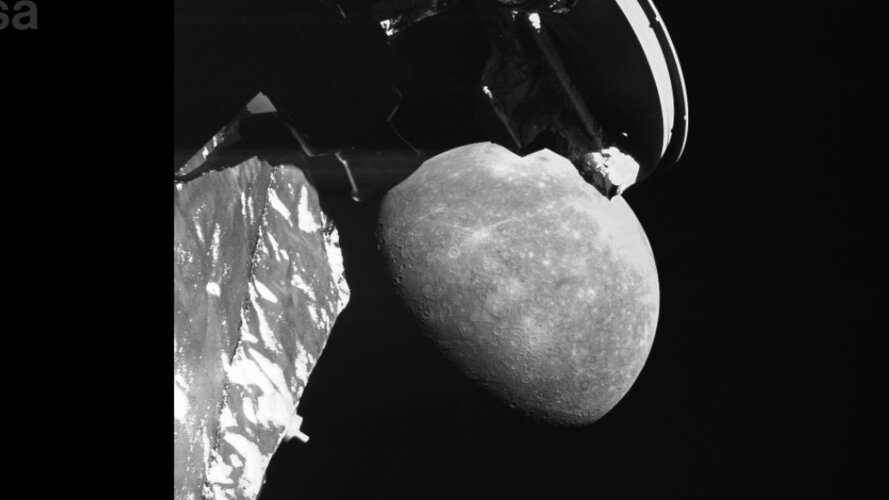Fly over Mercury’s surface
The second part of the movie cuts to a flyover of a special region of interest featuring the 600 km-long curved escarpment known as Beagle Rupes, and the 218 km-wide Manley Crater, newly named by the International Astronomical Union for the Jamaican artist Edna Manley. Beagle Rupes cuts through an elongated impact crater named Sveinsdóttir.
The flyover begins looking down vertically, with east towards the top of the frame. The viewpoint then swoops down and in to focus on Beagle Rupes and Sveinsdóttir Crater, then looping round so the viewpoint migrates from east to south. It then tracks south to bring Manley Crater into the centre, with the straight scarp known as Challenger Rupes to its left, before rotating the view to bring north back to the top. At the end, the animated topography fades out and the projected image used for 3D reconstruction appears. Regions like these will be important for BepiColombo’s main science mission, to learn more about Mercury’s geological history.
The scene has been reconstructed using the ‘shape from shading’ technique. More than 400 years ago, Galileo Galilei noticed that surface regions on Earth’s Moon that tilt away from the Sun appear darker, and those facing the Sun appear brighter. The shape from shading algorithm builds on this fact. It takes the brightness of BepiColombo’s images of Mercury and infers the surface slope. With the surface slope, topographic maps can be created. This particular flyover view is based on a coarser digital elevation model from NASA’s Messenger, and the BepiColombo image. Shape from shading uses the image to refine the initial topography, uncover small geologic features, and predict more accurate slopes. The heights are not to scale.



